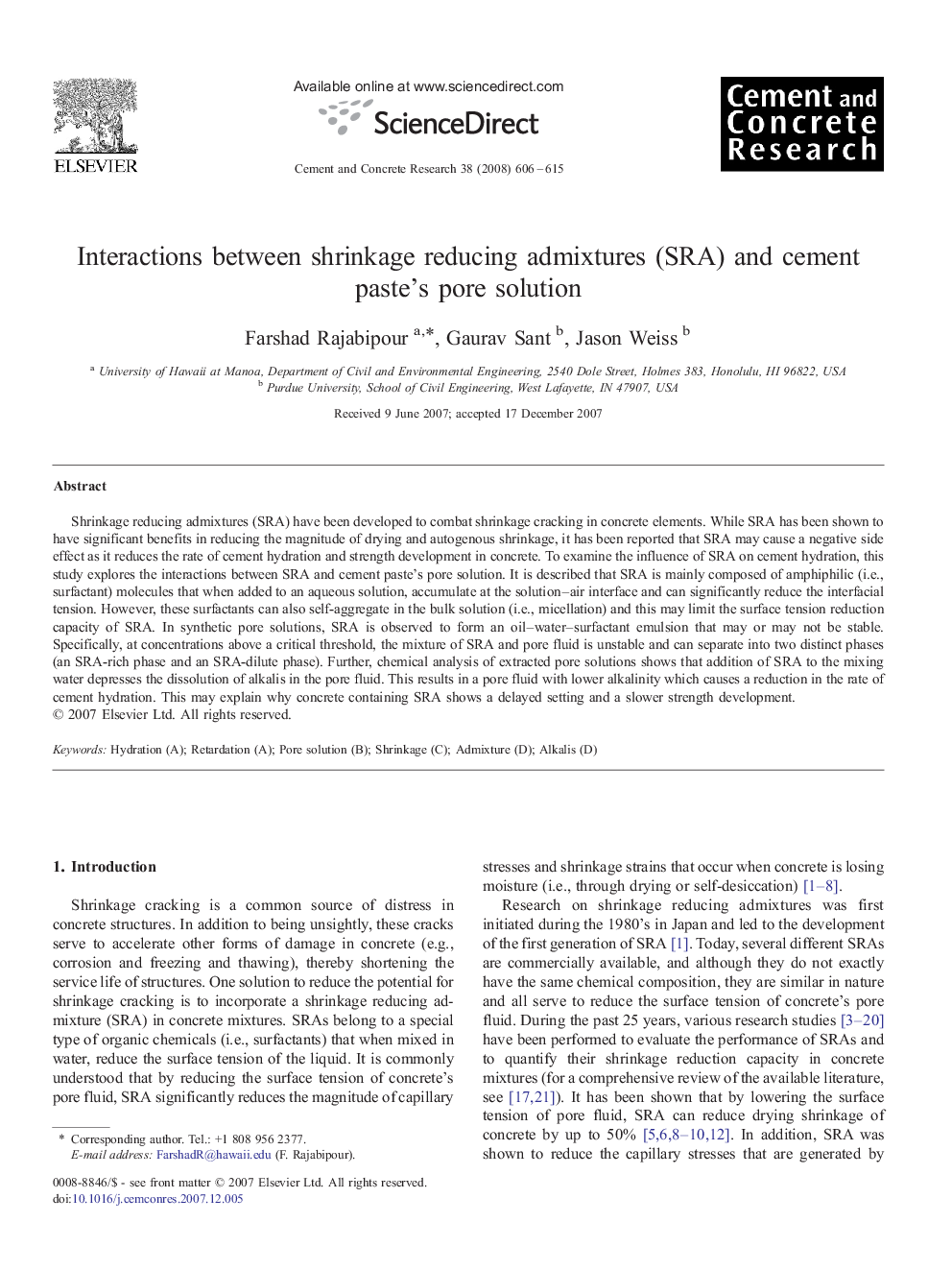| کد مقاله | کد نشریه | سال انتشار | مقاله انگلیسی | نسخه تمام متن |
|---|---|---|---|---|
| 1457484 | 989264 | 2008 | 10 صفحه PDF | دانلود رایگان |

Shrinkage reducing admixtures (SRA) have been developed to combat shrinkage cracking in concrete elements. While SRA has been shown to have significant benefits in reducing the magnitude of drying and autogenous shrinkage, it has been reported that SRA may cause a negative side effect as it reduces the rate of cement hydration and strength development in concrete. To examine the influence of SRA on cement hydration, this study explores the interactions between SRA and cement paste's pore solution. It is described that SRA is mainly composed of amphiphilic (i.e., surfactant) molecules that when added to an aqueous solution, accumulate at the solution–air interface and can significantly reduce the interfacial tension. However, these surfactants can also self-aggregate in the bulk solution (i.e., micellation) and this may limit the surface tension reduction capacity of SRA. In synthetic pore solutions, SRA is observed to form an oil–water–surfactant emulsion that may or may not be stable. Specifically, at concentrations above a critical threshold, the mixture of SRA and pore fluid is unstable and can separate into two distinct phases (an SRA-rich phase and an SRA-dilute phase). Further, chemical analysis of extracted pore solutions shows that addition of SRA to the mixing water depresses the dissolution of alkalis in the pore fluid. This results in a pore fluid with lower alkalinity which causes a reduction in the rate of cement hydration. This may explain why concrete containing SRA shows a delayed setting and a slower strength development.
Journal: Cement and Concrete Research - Volume 38, Issue 5, May 2008, Pages 606–615